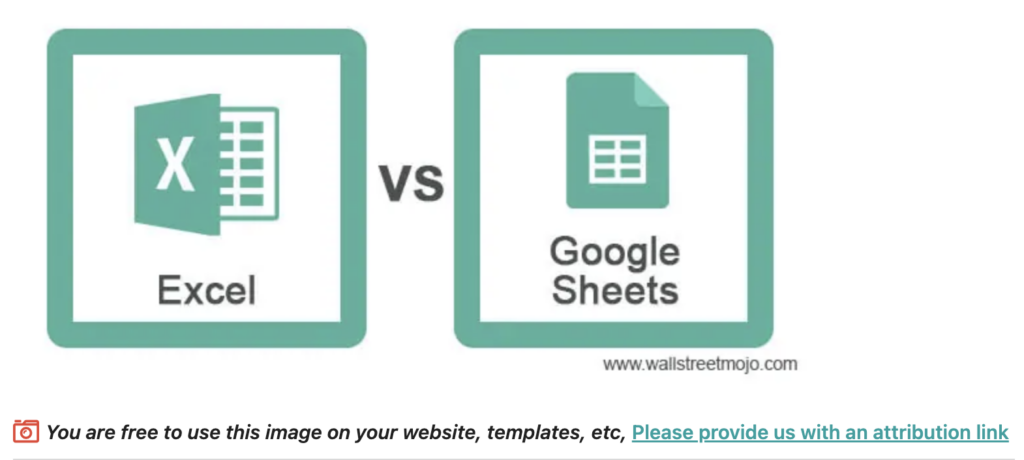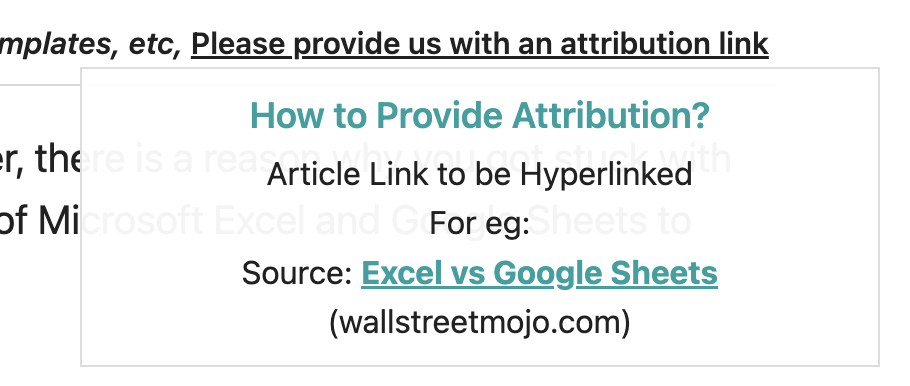I’ve been seeing a few example recently of sites clearly stating that people can use their images, with attribution.
It’s a methodology used a lot in the SEO and link building world, but usually done in a more nuanced way.
What’s interesting is when explicitly stated like this, it primes the viewers mind into wanting to use the image and link.
It plants the seed of an idea in their mind where they start to brainstorm areas they might be able to use this image.
For example, I would have no intention of using this somewhat banal image:

But after seeing that note under the image, it makes me start to consider it.
What they do well with their statement:
- The little red camera icon catches my attention
- The language they use is charitable and open: “You are free to use…”
- They end the sentence nicely as well with “Please provide…” – see they’re asking nicely with “please”!
- The link at the end makes me curious what happens when I click, oh look it’s a hover:

- They go further and even include the SEO link-optimized anchor text to use, so many lazy people will simply copy and paste
- On the image itself there’s a watermark with “wallstreetmojo.com” – a practice that’s as old as time, but used a lot more recently on social media (adapted from the web), now adapted back to the web…again
And now, in a very meta way, since I’m talking about their tactic, I’m now forced to link to them because I’m using their image. So here’s the attribution link: I hate Excel on Mac but Google Sheets can only handle so much data, so I’m forced to use Excel on Mac so I Googled Excel vs Mac and all I got was this comparison on WallStreeMojo which is a very mediocre article that’s highly SEO optimized, so here I am.
The impetus for me writing this post when I’m supposed to be putting together an important client proposal?
I saw this same thing on Visual Capitalist today, so I’m wondering if it’s a practice that will be widely adopted and Google will eventually have to discount these links in their algorithm one day.
I was reading this article on the fastest declining populations and knew that Visual Capitalist had a licensing option for images, but hadn’t noticed their “free to use but link option” that looks like this:

And upon expansion, it looks like this:

What they do well:
- Their expand/collapse button is more subtle than WallStreetMojo, which has pros and cons. There’s a higher-quality, more premium and editorial feel this way; but it may mean less conversion rates to use the link since it’s not in your face as much.
- They offer a licensing option, which in turn makes the free usage of the image seem more valuable. I as a lowly pleb blogger can use this for free, when they are hinting that some corporations or licensees are paying top dollar to use the image.
- In the first bullet point, they clearly state that you should link back to this page when using the image. Doesn’t get more clear than that!
Action: Consider using these methods, at a certain scale
If you’re already a high volume publisher, turning on these features across all pages can be a big step change in SEO growth – ideally you’ll see an acceleration in link velocity from more people using and linking to these images.
If you’re a small time blogger, eh maybe you’ll get a few links from it – which can be a big boon if it works, but could suck up a bit of time if you’re adding something else to your publishing workflow.
If you can add in these snippets of language across all images by default with code and CSS, go for it!
It’s likely we’ll see some bigger affiliate sites start to do this at scale – like Dot Dash brands, Wirecutter, etc. They’re in a blood bath of competition with other product review publishers, so they’ll try to start edging each other out with different micro tactics, for sure.
Is this the end of this post?
For now. I’m starting this new idea where I publish a v 1.0 of a post and then improve it over time. If I have to sit down for 2-4 hours at a time to publish a polished masterpiece, I’ll end up doing it just a few times a year. Wish me luck with this new method.
Next time I’ll update this post with:
- More examples
- An analysis of whether the two above sites have seen a growth in links since adopting these tactics
- More how-tos
- Ideas for going beyond these simple visuals into more high-end infographics and data visualization



Leave a Reply